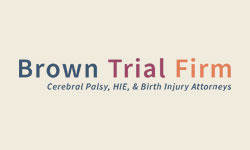What Is Pitocin?
Pitocin is a drug that is used to induce labor by increasing the frequency and strength of uterine contractions. Pitocin is regularly administered in labor and delivery departments across the country and can be a useful drug for labor induction or augmentation. However, Pitocin is also a very dangerous drug if it is used incorrectly or if the uterine contractions and the baby’s response to the uterine contractions are not carefully monitored. Pitocin is the drug most commonly associated with preventable adverse events during childbirth.1
During labor and inducing labor, a drug called Pitocin is commonly used – used probably in every labor and delivery department in the country at some time or another. Pitocin is a drug that causes the uterus to contract, and increases the frequency or the number of contractions over time. And the reason it’s used is to initiate, to start labor, or to make labor occur at a more regular rate.
However, Pitocin if it’s not used correctly can be very dangerous. There are side effects of Pitocin that can be dangerous to the mother and to the baby. And one of those is a condition called tachysystole. That’s the medical word, but another word for it is uterine hyper stimulation.
And that means the uterus is contracting too frequently, too many times. And because of that the baby doesn’t have enough time between those contractions to rest…to kind of take a breath and reoxygenate and get ready for the next contraction. And if that continues too long, that hyper stimulation of the uterus, then the baby runs of his oxygen reserve, his kind of safety net of oxygen, and is at risk then of suffering a brain injury from lack of oxygen.
There should be signs that the baby is having trouble with his oxygenation on the fetal heart monitor. So if the nurses and medical providers are monitoring the fetal heart monitor, they should see signs of this and should be prepared to act…to help the baby in order to get him to a state that he’s got enough oxygen. There should also be signs of too many contractions on the monitor. The monitor will show that the contractions are too frequent and there should be interventions to stop this.
Risks of Pitocin
The risks of Pitocin use include:
- Hypoxia
- Uterine hyperstimulation or tachysystole
- Placental abruption
- Uterine rupture
- Hypoxic-ischemic brain injury and cerebral palsy2
Pitocin is one of approximately twelve “High-Alert Medications” as published in a list by the Institute for Safe Medical Practices (ISMP).3 A High-Alert Medication has a heightened risk of causing significant patient harm or death when the medication is used in error. It requires special safeguards when used. If a medical provider uses a High-Alert Medication like Pitocin incorrectly, the consequences to the patient can be devastating.
How Pitocin Causes Injury
When a mother begins labor naturally, her body produces the hormone oxytocin. Oxytocin causes the uterus to contract. Pitocin is the synthetic or manufactured form of oxytocin. Pitocin-induced contractions may be longer, stronger, and/or closer together than a mother’s natural contractions. This can cause the baby to become stressed because there is not enough time between contractions to recover. During a contraction, there is a temporary decrease in blood-and-oxygen flow to the baby. After the contraction, there should be a period of rest before the next contraction. The baby needs this rest time to restore the flow of oxygen to the brain and vital organs.
When there are too many contractions without enough rest time between the contractions, the baby can’t “breathe.” If the excessive uterine contractions and low oxygenation to the baby continue and become severe enough, the baby develops hypoxia (low oxygen levels), acidosis, and even birth asphyxia. The acidosis and birth asphyxia can cause hypoxic-ischemic brain injury, which may result in seizures, developmental delays, and cerebral palsy.
Laboring mothers respond differently to Pitocin, so it is very important for medical providers to carefully monitor the dose of Pitocin, watch for signs of uterine hyperstimulation, and monitor the baby’s heart for abnormal heart rate patterns, which indicate developing hypoxia and acidosis. When Pitocin is given to a laboring mother, a fetal heart monitor device is used to monitor the mother’s contractions and the baby’s heart rate.
When the contractions are too frequent or too strong, or when there is inadequate rest time between contractions, medical intervention may be necessary to make sure that the baby is getting enough oxygen. The Pitocin may need to be decreased or discontinued, and the baby may require intrauterine resuscitation or delivery to prevent injury.
How Hospitals Try to Prevent Pitocin-Related Injuries
Because of the significant risks associated with the use of Pitocin, the American College of Obstetricians and Gynecologists has published literature stating that:
- A physician who can perform Cesarean section deliveries should be readily available, and
- Medical personnel familiar with the effects of Pitocin who are able to identify both maternal and fetal (mother and baby) complications should be present.4
Most hospitals have protocols for the administration of Pitocin in place. These protocols set the dose of Pitocin to be given initially, and calculate the increase in dosage that may be given going forward. Pitocin regimens described as “low-dose” (less frequent dosage increases) are associated with a lower incidence of uterine hyperstimulation or tachysystole.5
The dose of Pitocin for each mother should be individualized based on each mother’s response to the drug, and the lowest effective dose should be used to prevent complications.6
Help for Babies Hurt by Pitocin-Induced Tachysystole
Although much has been written about the dangers of Pitocin, a significant number of babies are still injured every year by misuse of Pitocin. If you think your baby was harmed by the improper use of Pitocin during labor, contact Laura Brown. She and her team can review medical records and fetal heart monitor strips to help determine what went wrong. Call +1 (855) 925-1041 for a free consultation.
Additional Information
1Clark SL, Belfort ML, Dildy GA, Meyers JA. Reducing Obstetric Litigation Through Alterations in Practice Patterns. Obstetrics and Gynecology, 2008; 112(6):1279-1283.
2Bakker, PC, Kurver PH, Kuik DF, Van Geijn HP. Elevated Uterine Activity Increases the Risk of Fetal Acidosis at Birth. American Journal of Obstetrics and Gynecology. 2007; 196(4):313.
3https://www.ismp.org/tools/highalertmedications.pdf
4Intrapartum and postpartum care of the mother. In: Guidelines for Perinatal Care, 7th ed. Elk Grove Village, Il: American Academy of Pediatrics; 2012: 180-181.
5Intrapartum and postpartum care of the mother. In: Guidelines for Perinatal Care, 7th ed. Elk Grove Village, Il: American Academy of Pediatrics; 2012: 180-181.
6Chapter 10/Induction of Labor. In: Current Diagnosis & Treatment Obstetrics & Gynecology. 10th ed. McGraw Hill; 2003: 211.

